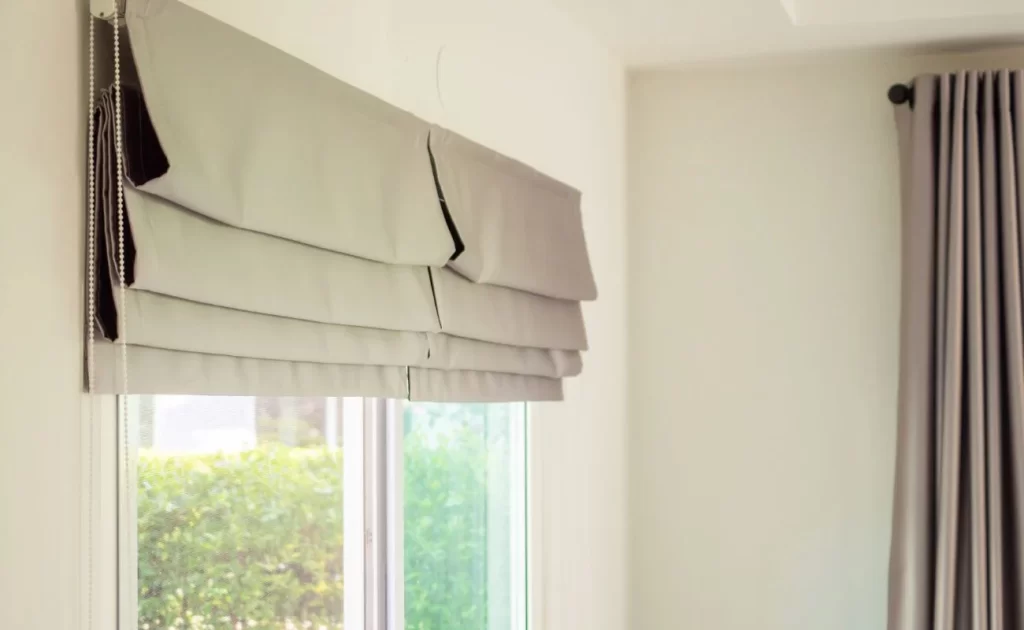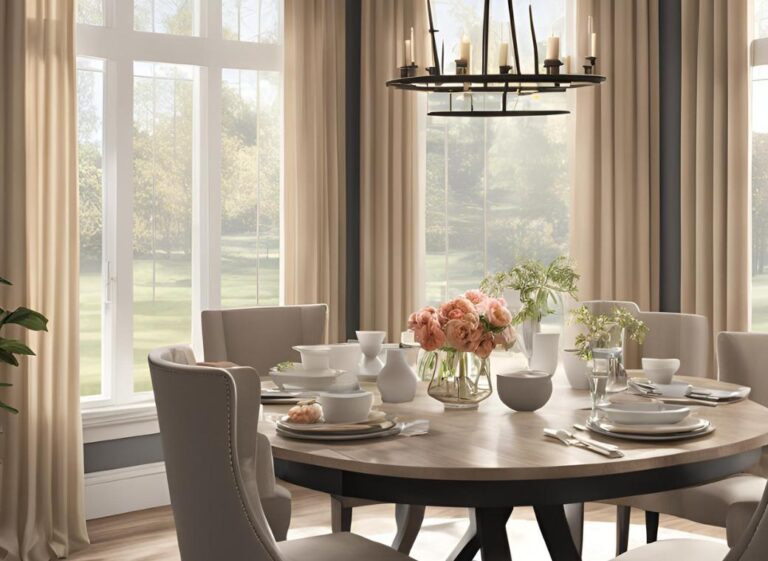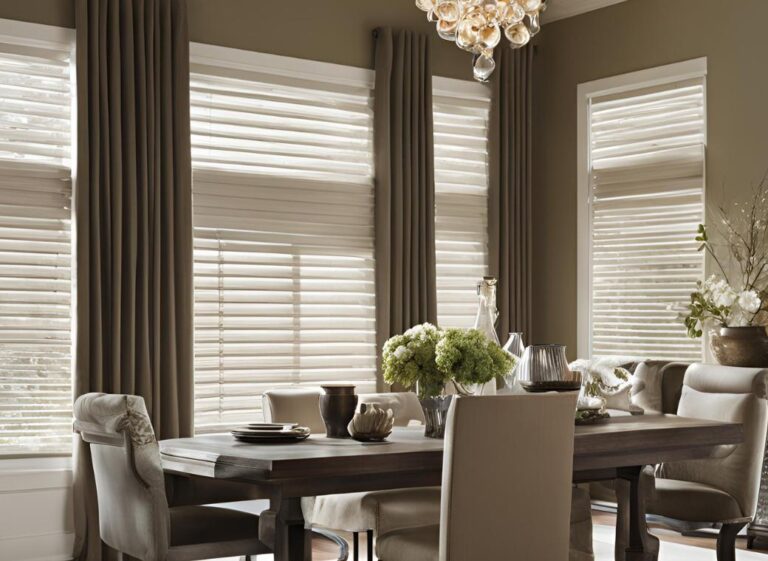Table of Contents

Let the Sunshine In—On Your Terms
You love natural light, yet the glare, heat, and fading it brings can sabotage your comfort. How do solar shades work to solve that dilemma? By blending technical fabric with clever design, these sleek rollers tame harsh rays while keeping your view intact. In the next few minutes you’ll learn exactly what goes on inside each shade, why that matters for your wallet and décor, and how to choose the perfect option for every room.
What Exactly Are Solar Shades?
Solar shades are roll‑up window coverings made from a high‑performance, vinyl‑coated fabric woven to precise densities. Instead of blocking light completely (like blackout rollers), they filter and diffuse it. Think of them as sunglasses for your windows—letting you see out, cutting glare, and shielding interiors from up to 99 percent of UV radiation.
Openness Factor 101
- 1 %–3 % openness: Maximum glare and heat reduction; ideal for media rooms or south‑facing glass walls.
- 4 %–7 % openness: Balanced view and protection—great for living areas.
- 8 %–14 % openness: Softens light while preserving panoramic vistas; perfect for picture‑window dining nooks.
The smaller the percentage, the tighter the weave and the stronger the sun‑blocking power.
How Do Solar Shades Work? The Science Made Simple
At the heart of every shade lies its fabric architecture:
- Micro‑engineered weave – Tiny gaps between fibers act as microscopic louvers, reflecting, absorbing, and redirecting sunlight instead of letting it stream straight through.
- Color chemistry – Dark exterior faces absorb visible light, slicing harsh glare, while lighter interior faces bounce heat outward, trimming summertime cooling loads and wintertime heat loss.
- UV filtration – Additives in the yarn capture ultraviolet rays before they bleach furniture, artwork, or flooring.
- Thermal barrier – By interrupting direct solar gain, the fabric can cut window‑related heat transfer by roughly 30 percent, a figure echoed by U.S. energy researchers.
- Adjustable lift system – A simple tug on a cordless hem bar—or a tap on your phone for motorized models—raises or lowers the roll, giving you granular control over brightness all day long.
Put together, these elements deliver a dynamic shield that protects your space without plunging you into darkness.
Key Components You Should Know
Component | What It Does for You |
Specialty yarns | Resist moisture, mold, and fraying for years of worry‑free performance. |
PVC or polyester coating | Adds strength, easy‑clean durability, and fire resistance. |
Seamless welded edges | Prevent curling and keep the roll perfectly flat against the glass. |
Cordless or motorized lift | Enhances child safety and fits modern smart‑home routines. |
Benefits You’ll Feel Every Day
Energy Savings
By blocking radiant heat before it enters, solar shades keep rooms cooler in summer and reduce HVAC runtime—slashing energy bills by an estimated 15 – 25 percent.
Glare‑Free Comfort
Reading, binge‑watching, or hosting brunch becomes easier when blinding sunspots are tamed yet ambient daylight still fills the room.
UV & Fade Protection
Cut ultraviolet exposure dramatically, helping sofas, rugs, and hardwood retain their color and value.
Daytime Privacy With a View
From the inside you see out; from the street passersby see a reflection. You enjoy scenery without feeling on display.
Sleek, Minimalist Aesthetics
Taut fabric and slim hardware suit contemporary, industrial, or coastal interiors—pair with drapes for layered luxury if you crave softness.
Choosing the Right Solar Shade for Your Space
- Room purpose – Home theater? Choose 3 % openness. Home office? Aim for 5 %.
- Window direction – East‑ and west‑facing panes battle low‑angle glare—darker fabrics excel here.
- Climate zone – Hot, sunny regions benefit from lighter exterior colors that reflect heat.
- Décor goals – Neutrals blend in; charcoal frames outdoor views like a photo border.
- Control preference – Go cordless for kid safety; upgrade to motorization for hard‑to‑reach skylights or whole‑home automation.
Pro tip: Order fabric swatches first. Hold them against the glass at midday to preview color shift and visibility.
Installation & Care: Easier Than You Think
Most homeowners install inside‑mount solar shades with just a drill, screws, and a level. Measure width at three spots, mark bracket holes, secure hardware, and snap the roller into place. To clean, lower fully and swipe with a microfiber cloth or vacuum on low with a brush attachment—no harsh chemicals needed.
Solar Shades vs. Other Window Coverings
Feature | Solar Shades | Cellular Shades | Traditional Drapes |
View preservation | ✔ | ✖ (opaque cells) | Variable |
Glare control | High | Medium | Medium |
Energy efficiency | High (radiant heat barrier) | Very high (insulating pockets) | Low–Medium |
Dust resistance | Excellent | Good | Poor |
Modern aesthetic | Sleek | Subtle | Depends on fabric |
FAQs About How Solar Shades Work
Are solar shades the same as roller shades?
All solar shades are rollers, but not all rollers use solar‑screen fabric. The difference lies in openness factor and UV‑blocking capability.
Can you see at night through solar shades?
When interior lights are brighter than exterior darkness, visibility reverses. Pair shades with drapery for nighttime privacy.
Do darker or lighter fabrics work better?
Dark colors reduce glare best; light colors reflect heat more effectively. Choose based on your primary concern.
Will they darken my room too much?
Pick a higher openness level (8 %–10 %) to keep interiors bright while still cutting harsh rays.
Shade Smarter Today
Now that you know exactly how solar shades work—from microscopic weaves to macro‑level energy savings—you’re ready to bring effortless comfort and style to every window. Review your room needs, order a few swatches, and install shades that let you savor sunshine without the downside. Your eyes, furniture, and energy bill will thank you.


